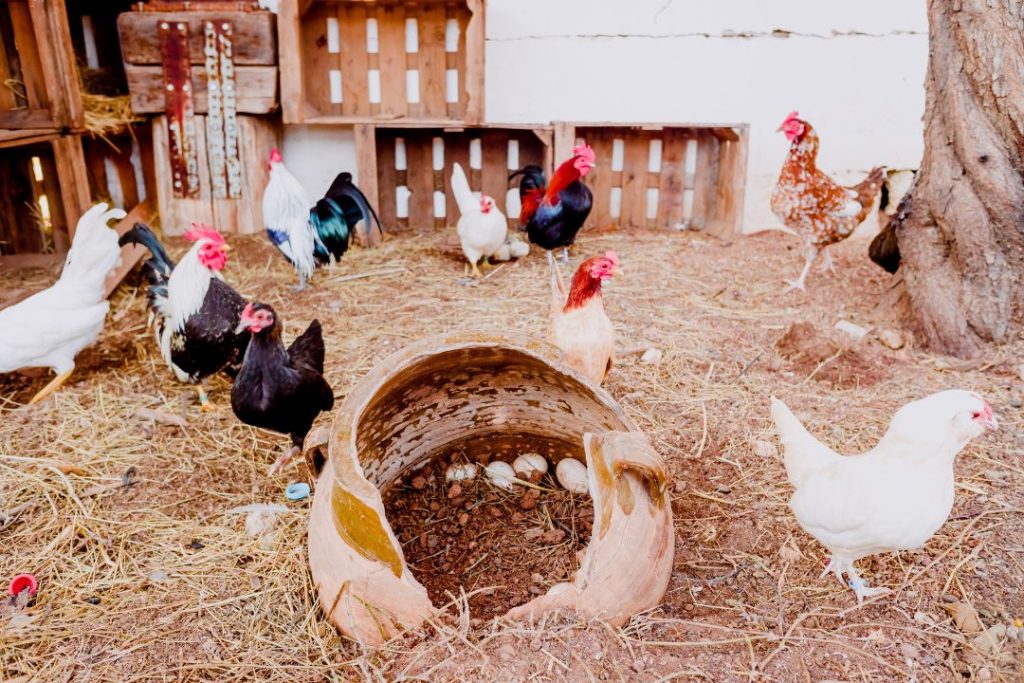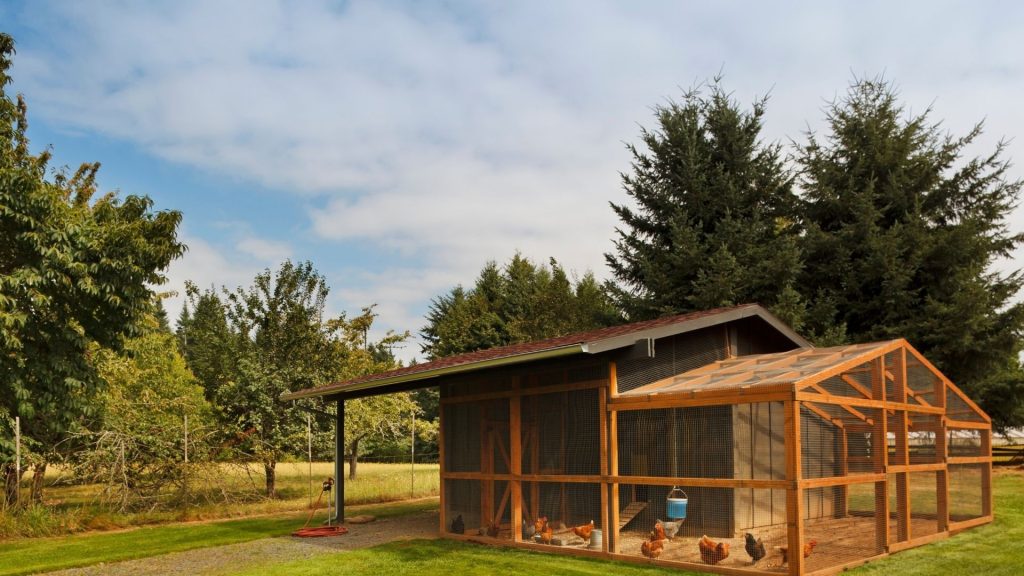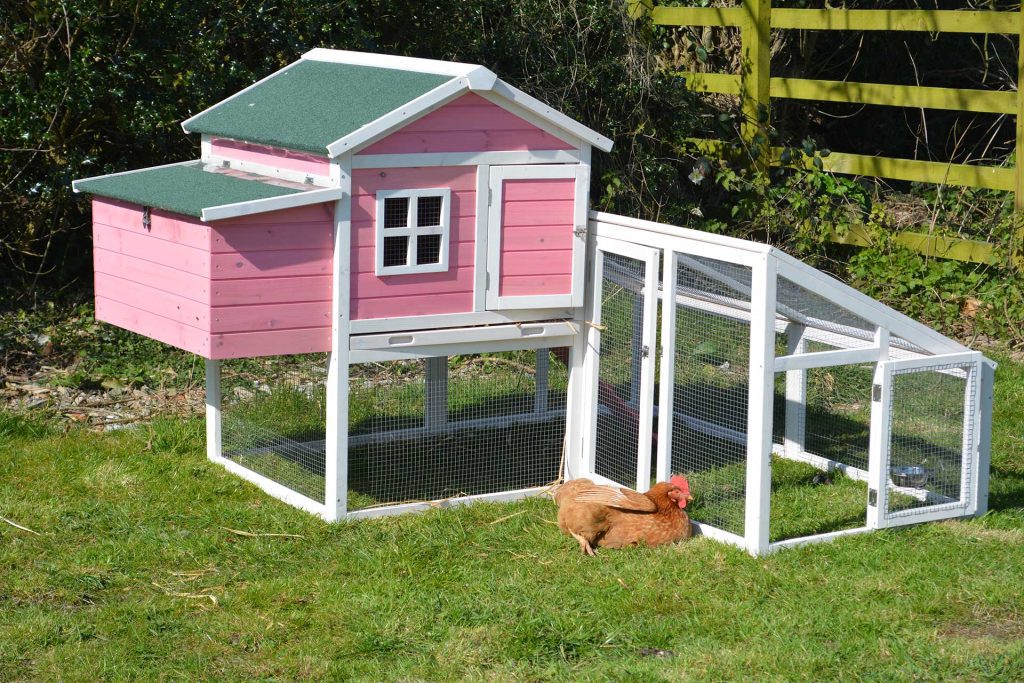Just picture the ideal coop for your hens. You may have considered nesting boxes, roosting platforms, and feeding stations. But have you thought about what to put on the floor of a chicken coop?
Your chicken’s health and happiness dramatically depend on this important factor, the coop floor. It’s not only about looks or price when picking the proper flooring. You must consider details like your local temperature and the size of your coop.
Also, you must emphasize other aspects like ease of cleaning, comfort, and safety for your birds. This article will provide you with a complete overview of the various types of flooring and bedding alternatives and their advantages and disadvantages.
Moreover, by going through it, you will surely learn what to put on the floor of a chicken coop. So, Lets dive in!
Why Does Coop Flooring Important?
Coop flooring is crucial for your chickens’ health. A good floor keeps the coop clean, dry, and pest-free. It goes beyond personal opinion or aesthetics to decide what to put on the floor of a chicken coop.
Your flock’s comfort, health, and wellness are at stake. The right flooring can make all the difference, creating a space that’s functional and conducive to happy, healthy chickens. The other important considerations are:
1. Ease of Cleaning
The flooring you choose plays a significant role in your coop. Some coop flooring materials are easier to clean than others, saving time and energy.
Imagine the daily droppings of a flock of chickens. An easy-to-clean floor allows you to remove these droppings efficiently.
So, a floor that allows for simple, efficient cleaning contributes to the overall wellness of your chickens. It’s an essential factor to consider when deciding what to put on the floor of a chicken coop.
2. Comfort and Safety
A harsh, uneven floor may make your chicken feet uncomfortable or even hurt. Imagine spending the entire day seated on a rough, rocky surface. It wouldn’t be enjoyable for your chicken.
Chickens are no different. Since their feet are delicate, prolonged contact with hard surfaces can lead to ulcers and other health issues. Additionally, a suitable floor gives your chickens a secure area to carry out their instinctual behaviors.
Chickens enjoy scrubbing the ground with their beaks. For their physical and mental health, these actions are essential. They can scratch and peck at the soft, comfy floor. A happy chicken is a healthy one, and your chosen floor can significantly contribute to that happiness.
What Are The Common Coop Flooring Materials?
From the available options, when selecting a floor for your chicken coop may seem daunting. However, the available options are:
1. Concrete
Concrete is one of the toughest materials you may use for your chicken coop floor. Few other materials can equal its longevity as it withstands weather and time. Concrete is also simple to keep clean, which is important for keeping your chickens’ surroundings healthy.
A concrete floor is virtually impervious to predators. It can add a layer of protection to keep your flock secure if you reside where burrowing threats like foxes or raccoons are a concern.
However, there are certain drawbacks to using concrete. It can be hard on your chickens’ feet, particularly if the bedding isn’t well cared for. Prolonged exposure to hard concrete surfaces can lead to foot sores and discomfort for your flock.
Moreover, installing a concrete floor can be costly compared to other options. The materials and labor involved may be a significant investment.
2. Dirt
Dirt floors provide chickens with a familiar, comfortable environment to scratch and peck, and they love to take dust baths. These behaviors are essential for their well-being, as they help chickens maintain their feathers and control pests.
In addition, while chickens enjoy scratching in the dirt, so do many predators. Dirt floors may offer a different level of protection than harder materials like concrete. Thus it could be a concern in areas with high predator populations.
3. Wood
Wood is a time-tested choice for coop floors. Its organic appearance and texture can give your coop a wonderful, rustic vibe. Additionally, it can act as a small amount of insulation, keeping your coop warm in colder weather.
Chickens feel somewhat at ease on wooden flooring since they provide a softer surface for them to walk on. They can, however, be challenging to clean, particularly if improperly sealed.
A buildup of bacteria smells, and other potential health problems can result from liquid and waste seeping into the wood. Furthermore, if the wood is frequently exposed to dampness, it may rot.
Additionally, it may turn into a home for parasites like mites and lice, which might seriously harm your hens.
What Are The Bedding Options For Your Chicken Coop?
Aside from flooring, another significant consideration for your chicken coop is bedding. Bedding serves multiple purposes in your coop.
It adds comfort, helps absorb waste, and can even offer an entertainment source for your chickens. However, the bedding options for your chicken coop are:
1. Straw Or Hay
Straw or hay is a classic bedding choice for many chicken keepers. It is frequently easily accessible, particularly in rural places, and reasonably priced. It has good insulation qualities that keep your coop warm in colder weather and gives the chickens a plush, comfy surface to walk on.
But, like all bedding materials, straw or hay has its drawbacks. It can retain moisture, leading to a damp environment that can encourage mold growth.
This can cause respiratory problems in your chickens. Cleaning a coop with straw or hay bedding can be more labor-intensive than other options.
2. Sand
If you’re looking for a bedding option that’s excellent at absorbing droppings and relatively easy to clean, sand might be your choice. It provides a similar texture to dirt, and chickens enjoy scratching and dust bathing in it, which aids their natural grooming behaviors.
3. Wood Shavings
Wood shavings, particularly pine, are a common choice for coop bedding. They are quite absorbent, which keeps your coop dry and sanitary. Additionally, when the time comes, they’re rather simple to clean out, saving you some work.
But it’s crucial to pick your wood shavings correctly. Some varieties, such as cedar, can be poisonous to hens. Cedar’s fragrant oils can aggravate respiratory conditions and even interfere with egg production. Always choose secure, non-aromatic wood shavings like pine for your coop’s bedding.
What To Put On The Floor Of A Chicken Coop?
A chicken coop floor choice can include balancing several considerations, including cost, durability, cleanliness, the comfort of the chickens, and the ability to fend off predators. However, while choosing flooring you must consider several factors.
Concrete floors are extremely durable, easy to clean, and best at preventing predators from digging under the coop. They can also be easily hosed down for cleaning.
The main downside is the installation cost, as concrete can be more expensive than other flooring options. Also, it can be hard on your chickens’ feet if not covered with suitable bedding material. Dirt or earth floors are the most natural choice and allow chickens to express their natural behaviors, such as dust bathing and scratching.
However, they can become muddy in wet weather and are not as easy to clean as hard surfaces. They also allow predators an easier route to burrow into the coop so additional security measures may be necessary.
Wooden floors have the advantage of being more comfortable for chickens to walk on and can provide an adequate barrier against predators. However, they can be prone to rot if not properly maintained and more difficult to clean than concrete. Some bedding is usually needed to absorb moisture and make cleaning easier.
Now, considering all these things choose the floor for your chicken coop wisely.
Predator-Proofing Your Coop Floor
A coop floor must also offer protection from predators. Here’s how to ensure it does.
- Burrow-Proofing
Certain predators may burrow under the coop. Bury hardware cloth or concrete around the coop’s perimeter to deter them.
- Securing Entry Points
Ensure all doors and windows close securely. A tiny gap can be an invitation to a predator.
How To Choosing the Right Flooring Option?
Choosing the right flooring can seem daunting. Here are some considerations to guide you.
1. Coop Size
Larger coops may benefit from harder, more durable flooring like concrete. Smaller coops could do well with softer options like wood or dirt.
2. Climate
Consider local weather patterns. If your area experiences heavy rain, a dirt floor may not be the best choice.
3. Budget
Cost can be a deciding factor. Materials like concrete can be expensive, while dirt and wood are usually more affordable.
End Note
Deciding what to put on the floor of a chicken coop is challenging. Our above comprehensive guide has made your job easier.
With our guidance above, you can make the greatest decision for your chickens. The flooring and bedding you select significantly impact your bird’s health, safety, and enjoyment. So, carefully put the floor in your chicken coop.
The ideal coop solution is easily within reach when factors like cleaning convenience, comfort, predator-proofing, regional climate, coop size, and price are considered.
Every flock is unique. So what works best for yours may be better for another. Observe your chickens and adjust accordingly. After all, a happy, healthy chicken results from a well-maintained coop!



